#1876-1928
Text
Poem ( For Ruling Party)
We’re gonna fire,we will go on fire.
We are going to burn .
We will go after burning the land.
Our parent teach us this technique,
We are enough for from north to north east
We the agent of crony capitalist
We will go after sale all national capital.
We the master of riot hate and descriminatin.
If you are not Hindu Muslim Sikh Esai,
We can divide you in sc st obc and caste
Not in…
View On WordPress
#dailyprompt-1870#dailyprompt-1876#dailyprompt-1878#dailyprompt-1880#dailyprompt-1883#dailyprompt-1885#dailyprompt-1890#dailyprompt-1893#dailyprompt-1902#dailyprompt-1909#dailyprompt-1914#dailyprompt-1919#dailyprompt-1924#dailyprompt-1928#dailyprompt-1932
0 notes
Photo

Elza Kalmár de Kövesházi (1876 – 1956) - Breathing Dance, ca. 1928
1K notes
·
View notes
Photo
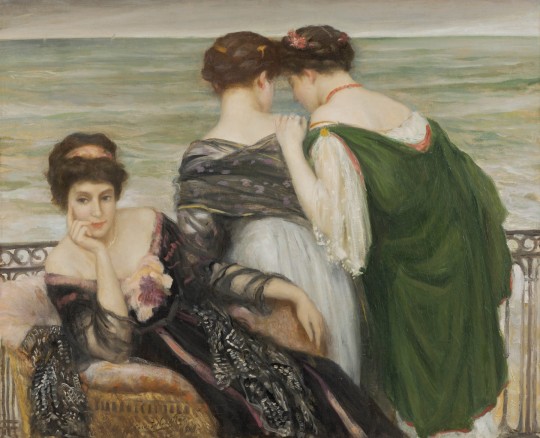
Henry Caro-Delvaille (French, 1876-1928)
Conversation by the Ocean, 1909
1K notes
·
View notes
Text

Jobless, 1928 - by August Sander (1876 – 1964), German
165 notes
·
View notes
Photo

Hiroshi Yoshida (吉田博, 1876 – 1950)
「東京拾二題 堀切の志ようぶ」
Iris Garden in Horikiri (Horikiri no shôbu), from the series Twelve Scenes of Tokyo (Tôkyô jûni dai)
1928
284 notes
·
View notes
Text

Henry Caro-Delvaille (French, 1876–1928) • La manicure • c. 1901 • Museo Nacional de Bellas Artes, Buenos Aires, Argentina
#art#painting#fine art#art history#henry caro-delvaille#french artist#fin de siècle#oil painting#genre painting#women in artworks#artwork#pagan sphinx art blog#art blogs on tumblr#art lovers on tumblr#early 20th century european art
36 notes
·
View notes
Text



February 7th 1837 saw the birth of James Murray, first editor of the Oxford English Dictionary.
A couple of things that I love about this, 1; a Scot was the first editor of the most famous English dictionary, a 2; the picture of Murray, he just looks the part!
He was certainly something of a prodigy as a child, despite his humble background. Born in the Borders village of Denholm, near Hawick, the son of a tailor, he reputedly knew his alphabet by the time he was eighteen months old, and was soon showing a precocious interest in other languages, including—at the age of 7—Chinese.
Thanks to his voracious appetite for reading, and what he called ‘a sort of mania for learning languages’, he was already a remarkably well-educated boy by the time his formal schooling ended, at the age of 14, with a knowledge of French, German, Italian, Latin, and Greek, oh and of course Gaelic, along with a range of other interests, including botany, geology, and archaeology. After a few years teaching in local schools—he was evidently a born teacher, and was made a headmaster at the age of 21—he moved to London, and took work in a bank.
e soon began to attend meetings of the London Philological Society, and threw himself into the study of dialect and pronunciation—an interest he had already developed while still in Scotland—and also of the history of English. In 1870 an opening at Mill Hill School, just outside London, enabled him to return to teaching. He began studying for an external London BA degree, which he finished in 1873, the same year as his first big scholarly publication, a study of Scottish dialects which was widely recognized as a pioneering work in its field and was the first ever sustained history of the Scots tongue.
Only a year later his linguistic research had earned him his first honorary degree, a doctorate from Edinburgh University: quite an achievement for a self-taught man of 37.
In 1876 Murray was approached by the London publishers Macmillans about the possibility of editing a dictionary, he accepted the challenged and it was generally thought the publication would take around ten years to complete and run to 6,400 pages, in four volumes, he undertook the work while still teaching at Mill Hill, although he did enlist help in several assistants.
Five years later- no- he hadn't finished it, he was a genius but not that much, they published the first volume, A-Ant, to steal the words from a future film, they were going to need a bigger book!" The team sent out the call for volunteers all across the country. one American man, William Chester Minor, even responded from his prison cell in Broadmoor while serving a life sentence for murder. still suffered from paranoid delusions, some saw his work on the Oxford English Dictionary as a form of therapy. Minor became a regular collaborator with Murray as he sent his notes to the editor every week for 20 years. Every letter Minor signed with the closing, “Broadmoor, Crowthorne, Berkshire.
Murray soon had to give up his school teaching, and moved to Oxford in 1885; even then progress was too slow, and eventually three other Editors were appointed, each with responsibility for different parts of the alphabet. Although for more than three-quarters of the time he worked on the OED there were other Editors working alongside him—he eventually died in 1915—and although he had a staff of assistants helping him, it is without question that he was the Editor of the Dictionary.
It was not until 1928 that C. T. Onions and William Craigie finally finished the main text. In terms of the methodology he developed, The Oxford English Dictionary is largely Murray's creation; as the ‘Historical Introduction’ to the OED states, ‘to Murray belongs the credit for giving it, at the outset, a form which proved to be adequate to the end’.
In his private life Murray married an Ada Agnes Ruthven and they found time to have 11 children together, all of whom reached adulthood, and unusual occurrence back then. Some even helped him in the compilation of the OED. The third pic is great and shows him astride a huge ‘sand-monster’ constructed on the beach during one of the family’s holidays in North Wales.
He was never made a Fellow of an Oxford college, to their shame, and only received an Oxford honorary doctorate the year before his death.He died of pleurisy on 26 July 1915 and requested to be buried in Oxford beside the grave of his best friend, James Legge.
32 notes
·
View notes
Text

Join us for our first ever Public Domain Film Festival!
All films will be shown in the BPCL reading room on the 4th floor of Jerome Library. Check out our other posts this week for some of our material in and about the public domain.
Tuesday, January 16, 4-7PM
Steamboat Willie (1928)
The Gallopin' Gaucho (1928)
Metropolis (1927)
Wednesday, January 17, 3-4:30PM
The Jackie Robinson Story (1950)
Friday, January 19, 2-4PM
His Girl Friday (1940)
Monday, January 22, 5-8PM
Reefer Madness (1936)
Teenagers from Outer Space (1959)
Tuesday, January 23, 6-8PM
Night of the Living Dead
Thursday, January 25, 3-4:30PM
The General (1926)
Friday, January 26, 3-4:30PM
Superman cartoons (1941-1943)
The Browne Popular Culture Library (BPCL), founded in 1969, is the most comprehensive archive of its kind in the United States. Our focus and mission is to acquire and preserve research materials on American Popular Culture (post 1876) for curricular and research use. Visit our website at https://www.bgsu.edu/library/pcl.html.
#bgsu#libraries on tumblr#public domain#steamboat willie#metropolis#jackie robinson#his girl friday#reefer madness#teenagers from outer space#night of the living dead#the general#superman
31 notes
·
View notes
Text

Ishibashi Kazunori (1876-1928, Japanese) ~ Lady Reading Poetry, 1906
[Source: shimane-art-museum.jp]
99 notes
·
View notes
Photo

Sir Francis Bernard Dicksee (1853-1928) British
Study for 'La Belle Dame Sans Merci' 1901
Dicksee entered the Royal Academy Schools in 1870, being taught by Millais and won gold and silver medals. Dicksee began to exhibit at the Royal Academy in 1876 and was elected a full Academician in 1891.
111 notes
·
View notes
Photo

Fujiyama from Okitsu 1928, Hiroshi Yoshida(1876-1950)
254 notes
·
View notes
Photo
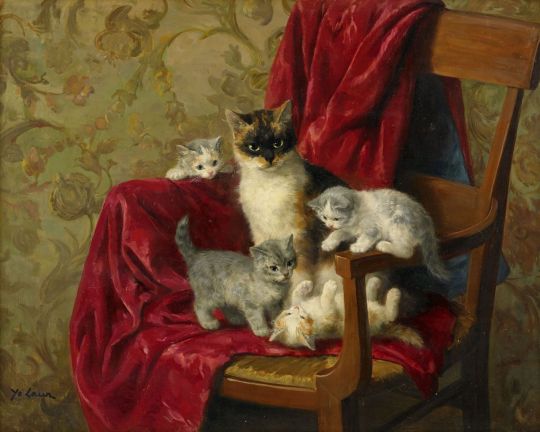
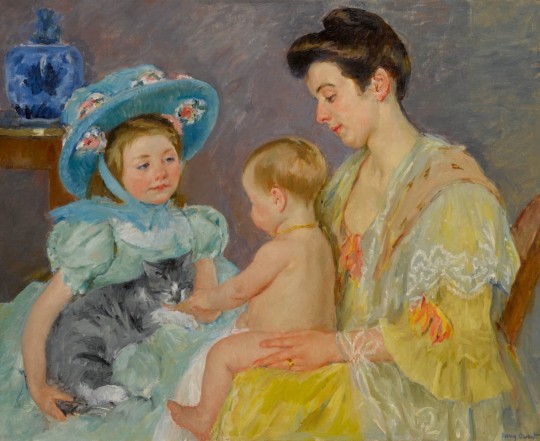
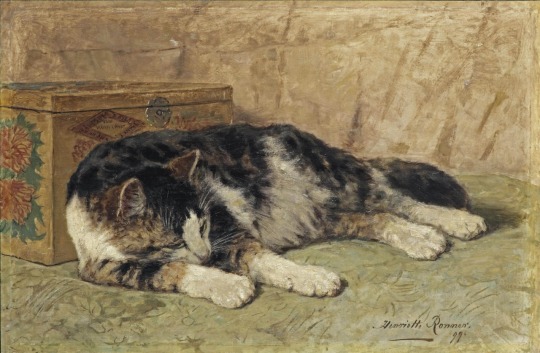

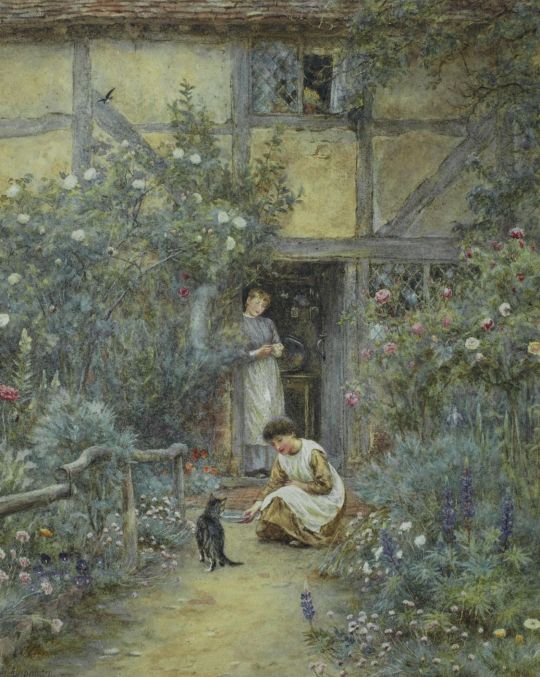




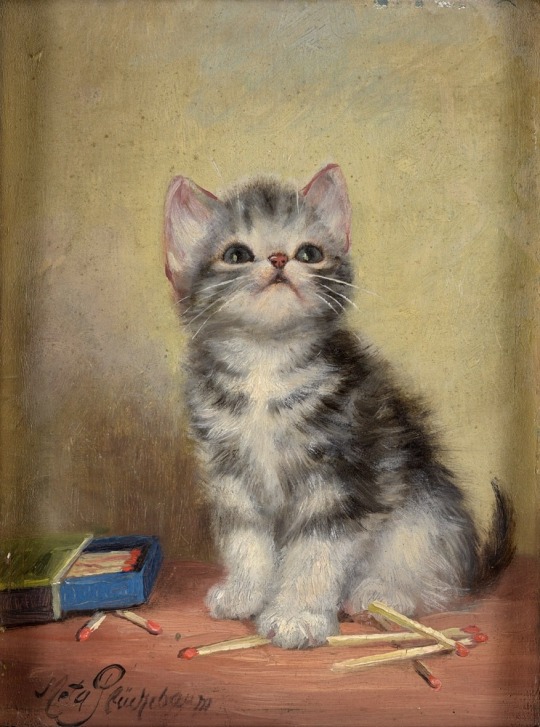
Happy International Cat Day!
Marie-Yvonne Laur (Yo Laur, French, 1879-1943): The Cat and Her Kittens
Mary Cassatt (American, 1844-1926): Children playing with a cat
Henriette Ronner-Knip (Dutch, 1821-1909): La siesta (1899)
Minnie Rosa Bebb (English, 1857-1938): A pair of kittens watching wasps on a dish of fruit (1899)
Helen Allingham (English, 1848-1926): The saucer of milk
Suzanne Valadon (French, 1865-1938): Bouquet and a Cat (1919)
Maria Wiik (Finnish, 1853-1928): Makaava kissa, Mosse (early 1870s)
Ekaterina Nikolaevna Katshura-Falileeva (Russian, 1886-1948): At the samovar
Adelaide Leuhusen (Swedish, 1828-1923): Still life with cat
Meta Plückebaum (German, 1876-1945): Les Allumettes
#international cat day#world cat day#cats#kittens#women artists#women painters#art#painting#long post
487 notes
·
View notes
Text
Dedicato alle capre antisemite.
LA VERITA' SUGLI EBREI IN ERETZ ISRAEL, O PALESTINA
Di Indro Montanelli
Nel 1876, assai prima dunque della nascita del sionismo, vivevano a Gerusalemme 25.000 persone, delle quali 12.000, quasi la metà, erano ebrei, 7500 musulmani e 5500 cristiani. Nel 1905 gli abitanti erano saliti a 60.000. Di questi 40.000 erano ebrei, 7000 musulmani e 13.000 cristiani. Nel 1931 su 90.000 abitanti, gli ebrei erano 51.000, i musulmani 20.000 e i cristiani 19.000. Nel 1948, alla vigilia della nascita dello Stato ebraico, la popolazione di Gerusalemme era quasi raddoppiata: 165.000 persone, di cui 100.000 ebrei, 40.000 musulmani e 25.000 cristiani. La presenza ebraica a Gerusalemme ha sempre costituito il nucleo etnico numericamente più forte. Di nessun altro popolo Gerusalemme è mai stata capitale. E’ quindi una leggenda l’affermazione che gli ebrei siano stati assenti da Gerusalemme per quasi venti secoli o che costituissero una insignificante percentuale della popolazione.
Prima che scoppiasse la seconda guerra mondiale, il nazismo in Germania già perseguitava i suoi 500.000 cittadini ebrei. Le disperate richieste di quegli ebrei di essere accolti nei paesi democratici al fine di evitare quello che già si profilava chiaramente come il loro tragico destino, vennero respinte.
Nel luglio 1938, i rappresentanti di trentuno paesi democratici s’incontrarono a Evian, in Francia, per decidere la risposta da dare agli ebrei tedeschi. Ebbene, nel corso di quella Conferenza, la risposta fu che nessuno poteva e voleva farsi carico di tanti profughi. Dal canto suo la Gran Bretagna, potenza mandataria della Palestina, venendo meno al solenne impegno assunto verso gli ebrei nel 1917 di creare una National Home ebraica in Palestina, nel 1939 chiudeva la porta proprio agli ebrei con il suo Libro Bianco, nel vano tentativo d’ingraziarsi gli arabi.
E’ stata questa doppia chiusura a condannare a morte prima gli ebrei tedeschi e poi, via via che la Germania nazista occupava l’Europa, gli ebrei austriaci, cechi, polacchi, francesi, russi, italiani, e così via. Il costo per gli ebrei d’Europa, che contavano allora una popolazione di dieci milioni, fu di sei milioni di assassinati, inclusi un milione e mezzo di bambini. Appena finita la seconda guerra mondiale i 5/600.000 ebrei superstiti, in massima parte originari dell’Europa orientale, si trovarono senza più famiglia, senza amici, senza casa, senza poter rientrare nei loro paesi, dove l’antisemitismo divampava (in Polonia ci furono sanguinosi pogrom persino dopo la guerra, e nell’Unione Sovietica Stalin dava l’avvio a una feroce campagna antiebraica).
Tra il 1945 e il 1948 nessun paese occidentale, Gran Bretagna e Stati Uniti in testa, volle accogliere neanche uno di quel mezzo milione di ebrei “displaced persons”, come venivano definiti dalla burocrazia alleata. La Palestina, malgrado la Gran Bretagna e il suo Libro Bianco, sempre in vigore anche dopo la fine della seconda guerra mondiale, non fu quindi una scelta, ma l’unica speranza, cioè quella del “ritorno” a una patria, all’antica patria, una patria dove da tempo si era già formata una infrastruttura ebraica.
Nel passato la vita degli ebrei nei paesi islamici e negli stessi paesi arabi è stata nell’insieme sopportabile. Di serie B, ma sopportabile. Gli arabi hanno incominciato a sviluppare in Palestina un odio “politico” nei confronti degli ebrei pochi anni dopo l’inizio, nel 1920, del Mandato britannico. L’odio, sapientemente fomentato dai capi arabi, primo tra i quali il Gran Muftì di Gerusalemme (che durante la seconda guerra mondiale avrebbe raccolto volontari per formare una divisione SS araba andata poi a combattere a fianco dei tedeschi contro l’Unione Sovietica), doveva culminare, dopo molti altri gravi fatti di sangue antiebraici, nella strage perpetrata a Hebron nel 1928 contro l’inerme, antica comunità religiosa ebraica.
Chiunque abbia viaggiato e vissuto nei paesi arabi durante le guerre del 1947-1973, sa che l’intera coalizione araba (Egitto, Siria, Iraq e Giordania) con il sostegno dei paesi arabi moderati, avevano un solo scopo che non veniva tenuto celato: il compito non era dare una patria ai palestinesi. Era cancellare ed annientare lo Stato di Israele. Le tragiche vicende che hanno successivamente tormentato il popolo palestinese sono state sempre per mano araba. Due i fatti impossibili da dimenticare: lo sterminio dei palestinesi in Giordania per mano di re Hussein e delle sue artiglierie, dove, solo il primo giorno del terribile “Settembre Nero” si contarono 5.000 morti; le stragi nel Libano, dove i palestinesi sono stati assediati ed attaccati, distrutti e costretti alla fuga dai miliziani sciiti di “Amal” e dai siriani.
Così scriveva Montanelli: “Che i profughi palestinesi siano delle povere vittime, non c’è dubbio. Ma lo sono degli Stati Arabi, non d’Israele. Quanto ai loro diritti sulla casa dei padri, non ne hanno nessuno perché i loro padri erano dei senzatetto. Il tetto apparteneva solo a una piccola categoria di sceicchi, che se lo vendettero allegramente e di loro propria scelta. Oggi, ubriacato da una propaganda di stampo razzista e nazionalsocialista, lo sciagurato fedain scarica su Israele l’odio che dovrebbe rivolgere contro coloro che lo mandarono allo sbaraglio. E il suo pietoso caso, in un modo o nell’altro, bisognerà pure risolverlo. Ma non ci si venga a dire che i responsabili di questa sua miseranda condizione sono gli «usurpatori» ebrei. Questo è storicamente, politicamente e giuridicamente falso.”
(Dal «Corriere della Sera», Indro Montanelli, 16 settembre 1972).
32 notes
·
View notes
Text

Otto Hake 1876–1965
Louise Sellergren Holding a Rose, circa 1928
Oil on canvas
Schwartz Collection
47 notes
·
View notes
Text
Two-piece dress, 1876. Centraal Museum Utrecht/Jasper Wiedeman 1996.
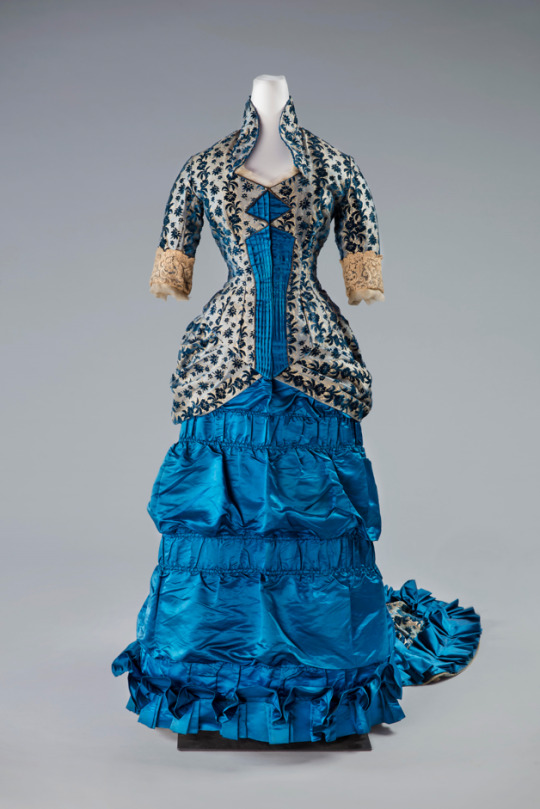


This evening gown from 1876 was one of the first dresses to be incorporated into the collection of the Centraal Museum. The original owner of this fashionable garment was -former director and curator- Carla de Jonge’s cousin, Annette Lucie Koch-van Rappard (1857-1928). Born in the Dutch East Indies, she married the Swiss consul and widower, Ferdinand Koch (1847-1900) in Leiden. She lived in Scheveningen after her marriage, but often travelled within Europe, and to Paris in particular. Where she probably bought this dress by fashion house Emile Pasquier. The bright blue skirt with its draped train and the bodice of golden yellow and blue cisele velvet must have made quite an impression. Three tapes are tied into the lining of the underskirt in order to form the specific shape of the skirt. Another ‘secret’ detail is the small lead weights in the bodice, which ensure that it stays in place.
#wow wow wow#dress#victorian#victorian era#victorian fashion#19th century#fashion history#historical fashion
68 notes
·
View notes
Photo

Hiroshi Yoshida (吉田博, 1876 – 1950)
Shinobazu Pond
1928
182 notes
·
View notes